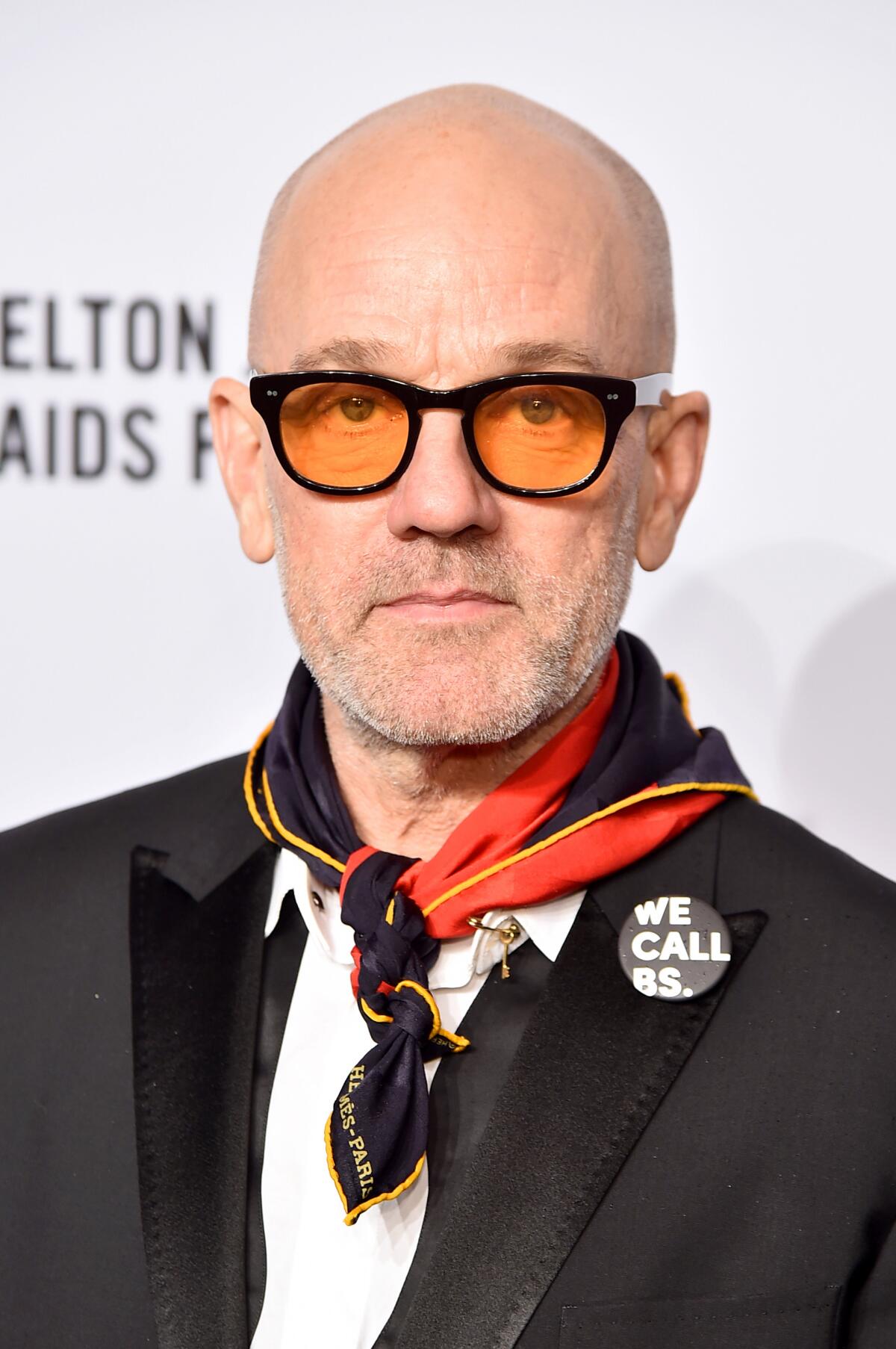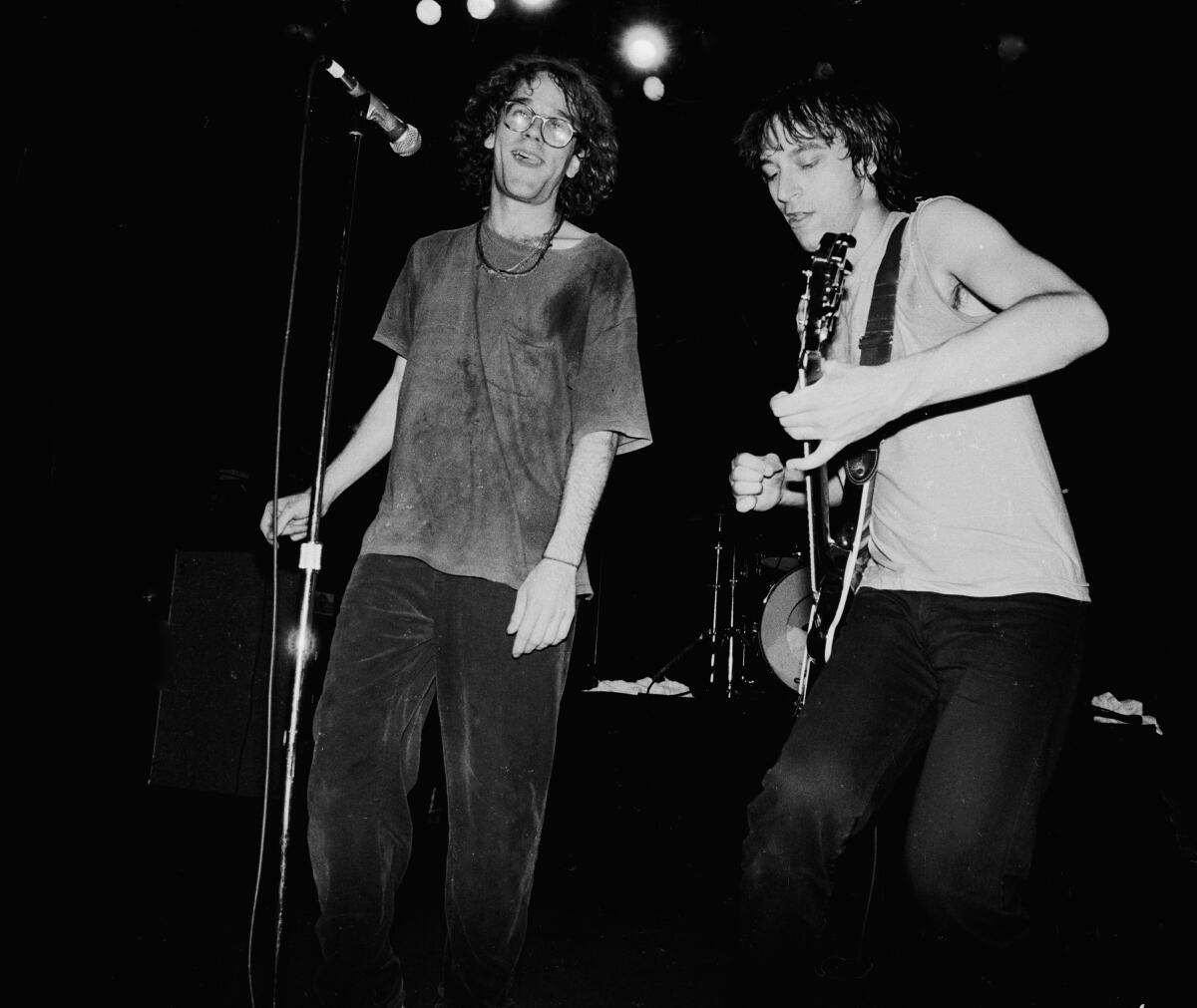Michael Stipe, superfan, on the ‘beautiful queerness’ of the Velvet Underground

- Share via
Michael Stipe first heard the Velvet Underground when, as an Army brat living in Southern Illinois, he happened upon the band’s music in the sale bin. Speaking by phone last week, he recalled: “I went to the local hardware store, which had a record section, and I found an 8-track tape of the Velvet Underground’s ‘Loaded’ and an 8-track tape of the New York Dolls first album. I bought them for 99 cents each.”
Not long after, he moved to Athens, Georgia, and co-founded R.E.M.
Few bands played as crucial a role in amplifying the Velvet Underground’s work as R.E.M. The band recorded or performed cover versions of “There She Goes Again,” “Pale Blue Eyes,” “After Hours” and “Femme Fatale,” in the process introducing first-generation indie rockers to the pioneering group’s lush darkness.
On Friday, AppleTV+ will premiere ‘The Velvet Underground,’ acclaimed director Todd Haynes’ documentary on the band’s origins, influences and music.
Stipe’s exquisite take on the Velvets’ “Sunday Morning” opens Verve Records’ “I’ll Be Your Mirror: A Tribute to the Velvet Underground and Nico.” Produced by the late Hal Willner shortly before he died of COVID-related causes in 2020, and timed to the release of Todd Haynes bravura new documentary “The Velvet Underground,” it features artists including Stipe, St. Vincent, Courtney Barnett and King Princess covering the entirety of the Velvet Underground’s debut album.
Stipe, 61, spoke to The Times about his love for the Velvet Underground and his decades-long friendship with Lou Reed.

What about the Velvet Underground drew you and R.E.M. to cover their songs?
For all of us in R.E.M., the Velvets were one of the most significant musical moments in American history. The first album is one of the top five, top three maybe, albums ever released, in terms of how complete it is and how great it is and what a lightning-in-a-bottle moment they captured. How audacious they were in their art, the music — and how much that was out of step with the world that they were in. And R.E.M. always felt a little out of step with what was going on. We forged our own path, and they were an aspirational influence for sure.
You covered the Velvet Underground’s “Sunday Morning” for the new tribute album. What guided your approach to covering such an essential song.
I came to this project because of Hal Willner. I wasn’t particularly interested in recording a cover, but it was a combination of “Pick any Velvet Underground song that you want” and that Hal was asking. My version of the song starts off with a long, long note — I got that from “Rhapsody in Blue.” I wanted to introduce the record in a way that clearly said, “This is not a note-for-note copy of an un-copy-able recording.” It had to be an interpretation. I also wanted to be on the first song [laughs] and it happened to be a song that I liked, so that worked out well.
“Sunday Morning” was originally sung by Nico, who wasn’t exactly ... the most pitch-perfect vocalist.
She sang out of tune.
Yes.
Well, I mean, so did Dylan, Neil Young ... Linda Hopper from Magnapop — she was the first singer from my younger sister Lynda Stipe’s band Oh-OK. So did Vanessa Briscoe of Pylon. Cindy Wilson from the B-52’s sings a little flat, and that adenoidal, raw beauty is a huge part of her appeal as a singer. It lends a humanity to the performance that you’re not going to get with a professional singer who hits every note.
Nico, singing with her German accent over the cacophony of Lou going in one direction and John [Cale] going in the other, and both of them kind of agreeing that this is going to work — it created this friction that bristled with energy and excitement.
Todd Haynes’ documentary ‘The Velvet Underground,’ about the influential 1960s rock band, is a work of art of its own.
How well did you know Lou Reed?
When he died [in 2013], I realized that I had known Lou for half of my life. He was kind of curmudgeonly and not altogether pleasant when we first met — I was 25, I think — but by the end of his life, we were friends.
We were neighbors on Canal Street, and of course I had deep admiration for him and for the work that he had done and the same for Laurie [Anderson], so we would hang out from time to time. He would give me these giant hugs and hold on to me for minutes at a time. He was a wildly intelligent and very emotionally accessible — and then inaccessible — person, but a total sweetheart in the end.
What does Todd Haynes bring to “The Velvet Underground” documentary that others might not?
I was thrilled when I found out that Todd was going to do a documentary about the Velvet Underground. There’s a beautiful queerness in the Velvet Underground. And there’s a beautiful queerness to Todd and to his work. They’re two peas in a pod.
More to Read
The biggest entertainment stories
Get our big stories about Hollywood, film, television, music, arts, culture and more right in your inbox as soon as they publish.
You may occasionally receive promotional content from the Los Angeles Times.












